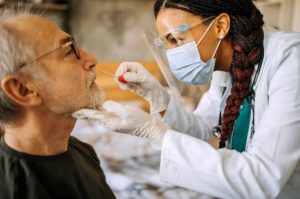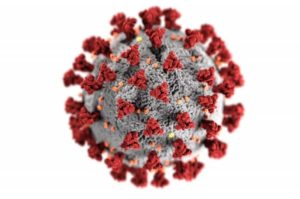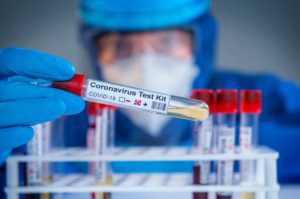West Bengal COVID-19 Cases June 2025: On June 4, 2025, West Bengal officially reported 60 new COVID-19 cases, pushing the total number of active cases in the state to 432. This spike in daily infections signals a worrying trend that public health officials had feared amid the relaxation of health protocols and declining public adherence to basic preventive measures. The resurgence of the virus has not only prompted alarm among healthcare workers and administrative authorities but also underscored the urgent need to reinstate and reinforce health and hygiene awareness among citizens.
This article provides a comprehensive analysis of the current COVID-19 situation in West Bengal, particularly in Kolkata, outlines government measures, evaluates hospital readiness, and examines the broader national context surrounding the rise in infections.

The Current COVID-19 Situation in West Bengal
As per the latest figures released by the Ministry of Health and Family Welfare, the state registered 60 new infections within 24 hours on June 4, 2025. Simultaneously, 28 individuals recovered and were discharged from healthcare facilities, reflecting a slow but steady recovery rate.
The overall active caseload of 432 COVID-19 patients has triggered concern, especially since this increase comes after a prolonged period of declining cases in West Bengal. Health experts fear that this uptick may mark the beginning of a fresh wave unless effective containment and prevention measures are swiftly adopted.
Officials at the West Bengal Health Department have also confirmed that no new fatalities have been recorded since the death of a 43-year-old woman from Howrah, which remains the only reported COVID-19-related death during this latest surge.


Profile of the Recent COVID-19 Fatality
The lone COVID-19 death during this new phase involved a 43-year-old woman residing in Howrah district. She was admitted to CMRI Hospital in Kolkata on May 28, 2025, with symptoms including high-grade fever, persistent cough, and difficulty in breathing. Her condition quickly deteriorated, and she tested positive for COVID-19 upon admission.
Despite aggressive medical intervention including ventilator support and dialysis, the patient succumbed to acute coronary syndrome, acute kidney injury, and septic shock, all exacerbated by her comorbidities. Her death marked a grim reminder that even with lower caseloads, the virus continues to pose severe risks—especially for individuals with preexisting medical conditions.

West Bengal COVID-19 Cases June 2025: Geographical Spread: Kolkata as the Epicentre
The heart of the current wave is Kolkata, which accounts for the majority of active cases. Several top-tier private and government-run hospitals have confirmed new admissions of COVID-19 patients. Among the hospitals with rising cases are:
-
Apollo Gleneagles Hospitals
-
Peerless Hospital
-
Fortis Anandapur
-
R.N. Tagore International Institute of Cardiac Sciences
While not all patients require ventilator support, multiple individuals have been admitted to High Dependency Units (HDUs) and Intensive Care Units (ICUs) due to deteriorating oxygen saturation levels.
Dr. Kaushik Bhattacharya, a senior pulmonologist at a city-based private hospital, remarked, “We’re seeing a clear rise in respiratory complications among COVID-positive patients. Timely hospitalization is crucial, especially for those with diabetes, hypertension, and chronic kidney disease.”
Municipal and State-Level Preventive Measures
In a proactive attempt to contain the spread of infection, the Kolkata Municipal Corporation (KMC) has rolled out several preventive strategies across its wards. These include:
-
Public banners and posters promoting hand hygiene, mask usage, and social distancing.
-
Deployment of community health workers to screen for symptoms such as fever, sore throat, and breathlessness.
-
Immediate testing and isolation of individuals reporting Influenza-Like Illness (ILI) or Severe Acute Respiratory Infections (SARI).
-
Enhanced sanitization drives in high-density public spaces such as bus stands, marketplaces, and metro stations.
KMC Commissioner Vineet Kumar Goyal said, “We cannot afford to become complacent. We are actively tracking new cases, and our primary healthcare teams are on high alert.”
Healthcare System Preparedness
Following the first few signs of rising cases in mid-May, state health officials initiated a review of hospital preparedness, especially in the Kolkata metropolitan area. Here are some of the measures taken:
-
Reactivation of COVID Wards: Previously shut down COVID isolation wards have been reopened in large government hospitals like S.S.K.M. Hospital, N.R.S. Medical College, and M.R. Bangur Hospital.
-
PPE and Oxygen Supply Audit: The Directorate of Health Services conducted an emergency audit to ensure sufficient Personal Protective Equipment (PPE), oxygen cylinders, and antiviral stockpiles are available.
-
Training Refresher Programs: Refresher training on COVID protocol has been reintroduced for nurses and medical interns to handle mild to critical cases efficiently.
Dr. Mausumi Roy, Director of Health Services, West Bengal, assured: “Our health system is equipped to handle the situation. However, the public’s cooperation in following safety guidelines is non-negotiable.”
Vaccination Status in West Bengal
Although the initial phase of vaccinations in 2021-2022 saw a large part of the population receiving two doses, the booster dose uptake has been underwhelming. The Health Department has now launched a renewed campaign urging citizens above 60 and those with chronic ailments to get their precautionary (third and fourth) doses.
As of June 2025:
-
First Dose Coverage: 97.2%
-
Second Dose Coverage: 92.6%
-
Booster Dose Coverage: Only 45.1%
In response, the state has resumed mobile vaccination camps in slum areas, rural markets, and near religious congregations.
State Government Response and Directives
Chief Minister Mamata Banerjee chaired a high-level meeting with health department officials, municipal commissioners, and law enforcement representatives. The key decisions from the meeting included:
-
Compulsory mask usage in hospitals, clinics, and elderly homes.
-
Thermal scanning booths at railway stations and inter-state bus terminals.
-
Enhanced surveillance at borders adjoining Jharkhand and Bangladesh to detect cross-border viral strains.
-
Encouraging work-from-home options in government departments where possible.
Health Minister Chandrima Bhattacharya stated, “This is not a full-blown crisis yet, but we cannot afford to wait until it is. Preventive action now will save lives tomorrow.”
National Overview: COVID-19 Resurgence in India
On a national level, India has registered 4,866 active cases as of June 5, 2025. While the numbers remain relatively low compared to earlier pandemic waves, the Ministry of Health and Family Welfare (MoHFW) has warned of new variants circulating in certain districts of Kerala, Maharashtra, and Tamil Nadu.
MoHFW Joint Secretary Lav Agarwal noted that the central government is closely coordinating with all states, including West Bengal, and is prepared to deploy Central Rapid Response Teams should any hotspot emerge.
The ICMR (Indian Council of Medical Research) has also directed increased genome sequencing of positive cases to track new variants and mutations.
Psychological and Social Impact
The resurgence of COVID-19 has brought back psychological stress for many citizens. Anxiety, fear of reinfection, and economic concerns have started resurfacing, especially among:
-
Daily wage earners
-
Frontline healthcare staff
-
Elderly individuals living alone
-
Small business owners
NGOs such as Anubhav Welfare Society have restarted their COVID helpline numbers for mental health counseling, food distribution, and telemedicine support for quarantined individuals.
Public Reaction and Social Behavior
Despite the surge, public behavior remains mixed. While some citizens are resuming mask usage and avoiding crowded places, a significant portion continues to flout norms.
Social media reactions indicate a growing frustration with the possibility of renewed restrictions. However, many netizens have praised the state government’s transparent data reporting and rapid mobilization of medical teams.
Conclusion: Vigilance Is Key
The uptick in COVID-19 cases in West Bengal as of June 4, 2025, is a reminder that the pandemic is not over. The situation demands renewed public cooperation, scientific vigilance, and coordinated governance.
With upcoming public festivals and increased inter-state travel during the summer break, the onus is on both the state machinery and its citizens to prevent another full-scale outbreak.

